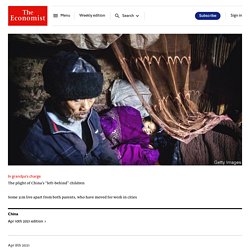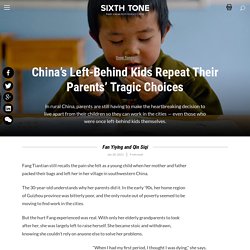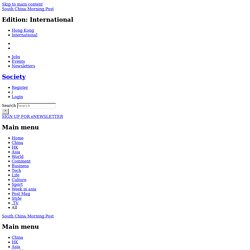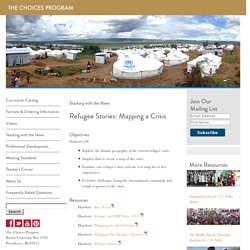

The plight of China’s “left-behind” children. EVERY SPRING, the Qingming festival brings families together for displays of respect and sorrow at the burial sites of their deceased relatives.

Some travel a long way to reunite over the three-day holiday, which ended on April 5th. Among them this year were the Zhaos of Leyun, a village in the lush Daba mountains of Sichuan province in the south-west. For migrant parents like them, there are living relationships that cause quiet grief, too. When their daughter, Lin, was just one month old the couple left her with her grandmother to allow them to return to their factory jobs on the coast.
That was six years ago. Enjoy more audio and podcasts on iOS or Android. There are about 31m people in China like Lin—children who have been left behind in their home towns or villages, usually in the care of relatives, while both of their parents work elsewhere. Another important cause has been China’s rigid system of household registration, known as hukou. Such abuse often goes undetected.
China’s Left-Behind Kids Repeat Their Parents’ Tragic Choices. Fang Tiantian still recalls the pain she felt as a young child when her mother and father packed their bags and left her in her village in southwestern China.

The 30-year-old understands why her parents did it. In the early ’90s, her home region of Guizhou province was bitterly poor, and the only route out of poverty seemed to be moving to find work in the cities. But the hurt Fang experienced was real. With only her elderly grandparents to look after her, she was largely left to raise herself. She became stoic and withdrawn, knowing she couldn’t rely on anyone else to solve her problems. When I had my first period, I thought I was dying. - Fang Tiantian, left-behind child “When I had my first period, I thought I was dying,” she says. Yet over 20 years later, Fang would end up following in her parents’ footsteps. 1. Nearly 70m Chinese children have been "left-behind. On the Road - MacroPolo. Rural exodus leaves a shrinking Chinese village full of ageing poor, and only three children. In Lumacha village, tucked away in the mountainous regions of China’s northwestern Gansu province, a lone farmer toils silently in the fields, preparing the land for the year’s crop of wheat.

At this time of the afternoon several years ago, he might have heard the patter of tiny feet and the giggles of children as they ran about playing tag. But now, there’s hardly a child in sight. The vast silence stretches all the way from the fields to the line of houses nearby, a stark reminder that the village is practically devoid of youth – almost everyone in the village is aged 40 and over. Most of the village’s younger adults have moved to the cities in search of job opportunities that pay better than farming, often taking their children with them.
“In the past, when it gets warmer after the winter, there would be many children running about and playing, shouting, having fun,” said Feng Ping, headmaster of Lumacha’s primary school. Refugee Stories: Mapping a Crisis. Teaching with the News Objectives Students will: Explore the human geography of the current refugee crisis.Employ data to create a map of the crisis.Examine one refugee’s story and use it to map his or her experiences.Consider challenges facing the international community and weigh responses to the crisis.

Resources Handout - Key Terms Handout - Refugee and IDP Data—2015 Handout - Mapping the Global Crisis Handout - Mapping One Refugee’s Journey Handout - Refugee Stories Optional Videos - Life on Hold Slideshow - Maps Note: Teaching about the global refugee crisis may require special sensitivity. Note: Colored pencils or markers are helpful for this activity. 1. Write the question "What might force you (and your family) to abandon your home and leave your country? " Distribute Key Terms, and review each term with the class. What are refugees and internally displaced persons? 2. After the class has completed the exercise, ask students to reflect on what they have mapped and read.
Comparing Chinese provinces with countries: All the parities in China. China’s Great Uprooting - Moving 250 Million Into Cities.